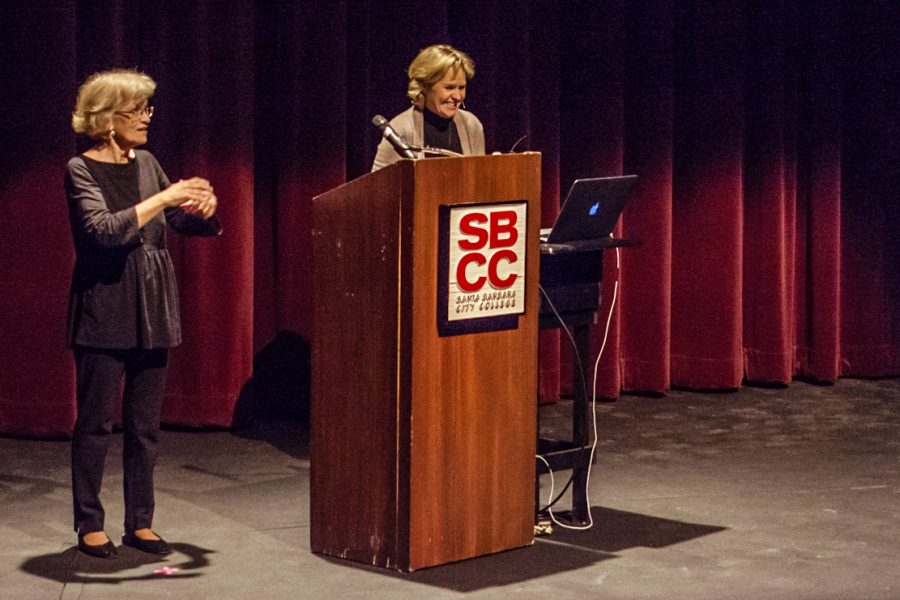Anne Redding, chair of the justice studies department, spoke at the 39th Annual Faculty Lecture Wednesday at the Garvin Theatre about how crime is woven into the fabric of our country.
“Crime is an opportunity for storytelling well beyond the salacious and gruesome headlines,” said Redding. “When used as a storytelling device, crime becomes a teaching tool.”
Speaking at the annual lecture is the highest honor that a faculty member can receive at the college. The person is nominated by students and their peers, and nominees are vetted by a selection committee.
“The lecture has a long history,” said math professor and last year’s honoree Pam Guenther. “We need some way to recognize outstanding faculty like Anne.”
Over the course of 90 minutes, Redding focused on the development of crime over the last 130 years, specifically in England and the United States. She took her audience through three acts in which she described infamous criminal cases that changed humanity’s perspective on the fields of crime, psychology, and investigation.
The first act of her lecture was about Edward Theodore Gein, also known as The Butcher of Plainfield, and how crime is something that is not only tied to socioeconomic level or race but is present everywhere. The second act was themed around how crime is interdisciplinary: Jack The Ripper illustrated how media, law enforcement and psychology overlap. The last act focused on Charles Manson, a white supremacist during the sixties whose anger and political confusion led him to form a cult known as the Manson Family. Manson gave orders to members of the group to brutally kill targets and use their blood to signal to the rise of the Helter Skelter.
All these cases happened in different times and places, but what is common between them is the cruelty and viciousness of those responsible.
“The great sociologist Emile Durkheim believed that crime is inevitable and necessary because it serves a social function. It reaffirms the social norms of society,” said Redding. “However, I see [it] as a bat signal altering us to danger and more importantly putting up a signal asking for help.
“Help in the form of social change and a necessary element of social change is the ability to learn.”
Redding said that crime is a wonderful teaching tool no matter what the discipline: Although the pillars to study crime and justice are sociology, psychology, and the physical sciences, the disciplines of math, history, political science and philosophy are also essential to have a wholesome understanding of human behavior and a better understanding of crime.
“For those who dare to look, crime has a lot to teach,” said Redding.
Click here to watch the full lecture.










![Milton Alejandro Lopez Plascencia holds a flag showcasing the United States and Mexico on Feb. 7 in Santa Barbara, Calif. “It’s heartbreaking to see what is happening all across the country,” Lopez Plascencia said. “I [want] my voice to be heard by the community.”](https://www.thechannels.org/wp-content/uploads/2025/05/MGSImmigration-1-1200x800.jpg)




